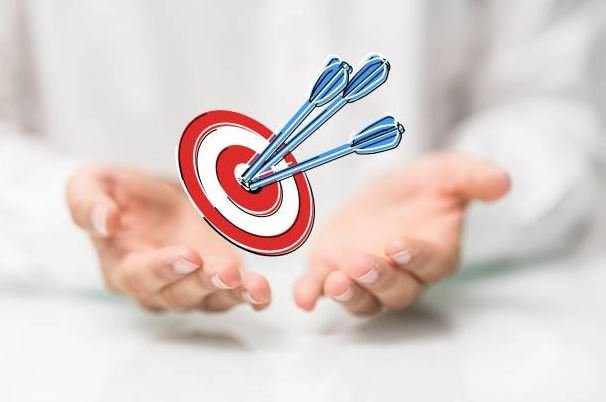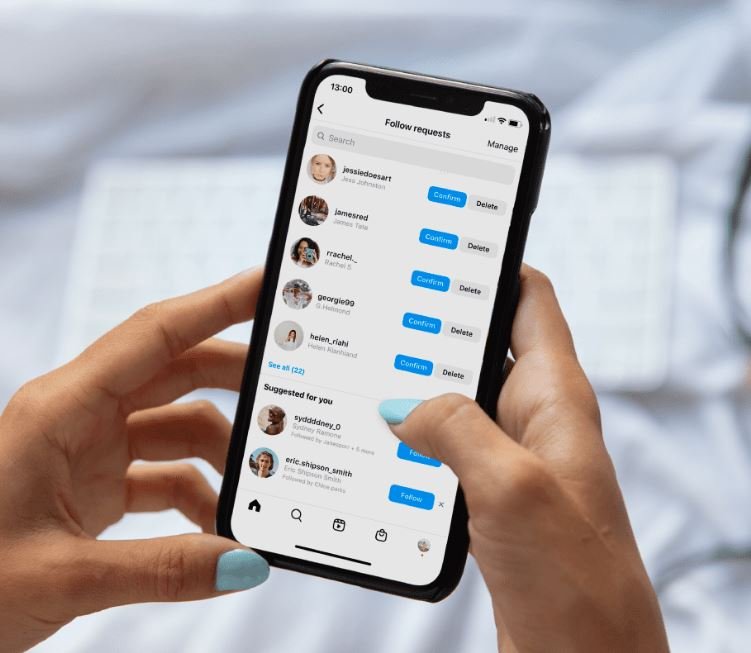Identifying a buyer’s Intent is very important in selling, especially when creating or selling content services or products. Creating valuable content for your target audience is the best way to build your marketing business.
The key to writing great content is understanding how to register for buyers’ needs. Buyer intent is the main factor that separates good from lousy marketing content. If you don’t understand buyer intent and how to spot it in your writing, you will struggle to produce quality content that attracts clicks and sales.
In this article, we’ll go over buyer intent and give tips on spotting buyer intent to create better marketing campaigns for your brand or site. By learning about buyer intent, you’ll be able to see what topics are being discussed by potential customers online; this will help guide your content creation efforts so that they can be more effective at attracting qualified leads ready to buy right now.
What is Buying Intent?
Buying Intent measures how likely someone is to purchase shortly. The term “buying intent” applies to B2B and B2C situations. It’s one of the most important metrics to track if you’re in any sales or marketing role.
It’s also an essential piece of data for any company in marketing, as it can help you determine which customers are most likely to buy from you again and which aren’t interested in buying from you.
When you create content, you need to know what your goal is. It’s not enough to write something because it feels good or makes sense in your head; you have to understand why.
Essentially, buyer intent is the reason why you are creating content. Buying Intent is the willingness of potential customers who visit your website or page to purchase your products or services.
Some contents are created for awareness [Informational Intent] like “why,” “how,” or “what.” In contrast, other ranges are designed for sales [Commercial Intent] like “best” or “versus” contents that compare similar or different products.
Is Buyer Intent Important When Creating Content?
Understanding buyer’s Intent is essential but shouldn’t be the center of your content creation process.
Content marketing relies on creating great content that solves problems for your customers. If you’re trying to reach new customers with your blog posts and videos, then knowing who they are and what they need is critical, which means understanding their buyer intent will help you create better-targeted content.
Buyer intent is a crucial component of any content marketing strategy. It’s a handy tool when creating content for your website, as it helps you focus on what your audience wants to learn and how they want to learn it.
Sometimes, buyer intent is unimportant, such as when someone searches for general information about a topic (how to make Italian sausage). However, if someone searches for specifics like “10 best BBQ grills under $200,” there is a good chance that they want to purchase something in this category.
How Do I Identify Purchase Intent?
You can quickly Identify purchase intent by gathering data on how your visitors use your website, content or how they interact with the product or service on sale.
How Do I Measure Intent?
You can measure buyers’ Intent using data collection tools, analytics tools, engagement trackers, or buyer’s willingness surveys. All data can be collected using different tools and analyzed in Excel.
Can Google Analytics Measure User Intent?
Google Analytics is a powerful tool that can be used to measure website traffic, conversions, and visitor behavior. Google Analytics can measure buyer’s Intent, but not in the way you think.
Google Analytics can’t count how a user feels about your site or brand. However, it can identify what users do on your website and how they interact with particular pages and contents and even measure mid-funnel user activity.
What Are High Buyer’s Intent Keywords?
These keywords have significantly strong Intent for the buyer, making a searcher conduct a transaction, whether it be to buy something, inquire about a service, or another type of action that has a strong possibility of leading to a later sale.
How Do I Measure Buyer’s Intent?

The most common way to measure buying Intent is through surveys, which ask consumers whether they intend to purchase a given product within the next six months. This can be done online and offline through phone calls or face-to-face interviews.
Here’s how you calculate buyer’s Intent when creating content as an affiliate.
1. By Using Questionnaires
Companies can ask customers to complete questionnaires about their desired products and services, including information about their current needs and how much they would be willing to spend on particular items. These responses can determine whether customers are likely to buy certain products in the future.
2. By Tracking Online Activity
Marketers can use tools like Google Analytics to track the websites people visit and how long they spend on each page. If someone trips multiple pages related to your company’s offerings, it could indicate that they are eventually interested in buying from you.
3. Using Industry Data
Industry data can help you understand your customer base and where they fall on the scale of buyer intent. This information can be used to help tailor offers for specific groups of buyers or even specific individuals within those groups who are most likely to respond positively to your marketing efforts.
You can get industry data from Ahrefs, Google Trends, SEMRush, Google Keyword Planner, BuzzSumo, or SocialBlade. You can use the information you discover to design campaigns around those times of the year and target them accordingly.
SurveyMonkey already has a complete guide on measuring buyer’s Intent; you should check it out if you’re in a new space and need help figuring out what to do.
Identifying Buyer’s Intent: How To Know Exactly What Your Visitors/Customers Want
There are several ways of spotting buyers intent for products or services you are selling as a marketer; it is better always to use data-driven techniques and strategies in spots—just Intent.
1. Look at Demographics
If you spend a lot of time looking at the demographics of your visitors, you know that the data contains a treasure trove of information. Demographics tell you what types of people visit your site, which can help determine how to target future buyers.
If your site is about home buying, for example, and most of your visitors are over 50 years old who live in certain cities around a country, then it’s safe to assume that this may be an area where there are more potential buyers than non-buyers or past buyers.
To take this one step further: If most people visiting your site come from search engines or social media sites like Facebook and Twitter, it tells us that those channels have high engagement rates meaning they’re effective when used correctly. And if their traffic tends toward lower incomes compared with other media such as direct mail campaigns or email marketing lists? Well, we’ve got another piece of data telling us what type(s) of ad spend would work best here.
2. Check Engagement
One of the most important things you can do to spot the Intent of buying from visitors is to check for engagement. There are a few ways to do this:
Look at how long visitors stay on your website; if they’re there for 10 minutes and then leave, that’s not a good sign! However, it might be time to notice if they stick around all day or even longer.
Check their interaction with your marketing messages, emails, social posts, and other messages that draw them in to learn more about what you have to offer. For example, if someone clicks on an email link but doesn’t open it after a few days (or worse yet, never opens it), that person isn’t engaged enough with what you’re selling to move further in the sales cycle.
Look at how these potential buyers interact with sales staff members via email or phone calls. Are they asking questions? Are they scheduling meetings? If so, mainly if those meetings include demos or product demonstrations, that’s another sign of Intent.
3. Collect As Much Data As You Can
Data is life. There more you have, the greater your chances of success.
The best way to find out what people want is to ask them. But when it comes to e-commerce, you can’t ask them directly.
So how do you identify a buyer’s Intent?
You need to collect as much data as possible, then analyze it and identify patterns. You can then use this data to predict the actions of your visitors.
You are using analytics and heatmap tools to see what your visitors are engaging with you, and a fantastic way to get started. Monitoring user behavior is a great way to spot potential buyers. The goal should be to understand your users’ behaviors and use that information to optimize your sales funnel.
One example is if you see that many of your users are searching for “how to” articles on how they can improve their productivity, it may indicate that you should create a specific guide or course on how people can increase their efficiency at work.
4. Check for Past Purchases
Past purchasing behavior is another indication that a visitor may be a buyer. If the visitor has purchased from your site before, she’s more likely to buy again in the future.
Check for any past purchases and if the visitor has bought from you in the past. If you want to dig deeper, you can use this information to segment visitors based on past purchases to know which ones are most likely to purchase from your site again.
One of the most critical ways to spot buyers’ Intent is by checking how visitors interact with the website. If a user has engaged with your messaging, they have seen the content and grabbed their attention. You can do this by checking out:
How many times per visit a user interacts with each of your pages. The more times they interact with a page, the higher chance they are interested in what you are offering on that page. Therefore, you must pay attention to where visitors spend most of their time on each page and what type of interaction they perform (clicks or scrolls).
If someone visits your website multiple times and keeps coming back, this might indicate that they want to learn more about who you are or what kind of products/services are available.
Types of Buying Intent
Buying Intent is a valuable metric because it helps you understand what people think and feel while they are on your website. This can be useful in different ways, depending on what you’re trying to achieve.
There are two types of buying Intent, each with its benefits and challenges. Here are some examples:
1. Active Buying Intent
Active buying intent is the most eager form of buyer. Enthusiastic buyers are actively looking for a solution and are ready to buy it from you. Active buyers have already engaged in the buying process and are highly motivated to make a purchase.
They’re willing to pay more than other buyers because their motivations are strong; they want what you have. If you can find active buyers who match your product or service offerings, it’s time for you to take action and close that sale.
2. Passive Buying Intent
Passive buying intent is when a customer is aware of a product but is not actively seeking to buy it. For example, if you have an online store that sells shoes, you might find that some customers who browse your site go on to purchase something else while they are there.
These customers may not have even been thinking about buying shoes when they started browsing the site but now are actively looking at different shoe styles or brands.
Just because someone has passive buying intent doesn’t mean they will become active buyers immediately. It’s up to you as a marketer to provide information about why your product or service is unique and memorable so that those customers can make an informed decision about whether or not they want it in their life (and wallets).
Factors That Influence Purchase Intent
The concept of purchase intention (or buyer intention) is often used in marketing. It refers to how likely a customer is to buy a particular product or service.
Whether someone is considering purchasing a product or service is essential doesn’t necessarily mean they will make the purchase. Many factors can influence whether or not someone decides to make the purchase.
In this article segment, we look at some factors influencing purchase intention.
1. Stimulus/Trigger
A stimulus is an external factor that initiates a response, whereas a trigger is an internal cue that causes someone to respond. For example, if you see an advertisement for your favorite brand of coffee on TV and then go out and buy some later that day, this would be considered a stimulus.
On the other hand, if you have been craving coffee all day long and see an ad for it at 8:00 pm when you are about to go grocery shopping to get dinner ingredients for dinner tonight, this would be considered a trigger.
The main difference between stimuli and triggers is their ability to influence purchasing behavior by influencing purchase intention. Stimuli can increase our interest in buying something because we like what we see or hear (e.g., visiting an ad), while triggers can lead us to make decisions based on emotions (e.g., feeling stressed).
2. Buyer Awareness
Buyer awareness is a critical component of the sales funnel. It’s the buyer’s level of interest in a product, service, or brand before they buy from you. For instance, if someone is learning about web hosting services for their business and hasn’t even begun to do research, that person would be at the top of the buyer awareness spectrum.
They haven’t yet decided whether they want to purchase hosting services or not, so they’re highly likely to bounce back from your site if it’s too expensive, lacks features, or doesn’t explain how it works well enough for them to understand without any experience with this type of product before paying high fees. To avoid this, you must provide enough awareness to visitors to your websites.
On the other end of this spectrum lies someone who already has an existing website on another platform but needs additional storage space due to increased traffic and new features like backups and security measures since their current host doesn’t offer those options in their free plan.
This type of person will be more willing than others because he knows what he wants and how much money he can afford per month based on his previous spending habits when choosing other products like cars, TVs, or stereo set, over time so there won’t be any surprises after signing up either way.
3. Online Activity Intent
Online activity intent measures how likely a consumer is to engage with a brand in a particular way. It’s not just about whether or not someone has ever visited your website, but rather whether or not they’ve made any moves toward engaging with it.
The first step in understanding online activity intent is defining what it means to be engaged. Engagement can take many forms: clicking on ads, signing up for newsletters and email lists, entering contests or sweepstakes, creating an account on the brand’s websites (or social media platforms), liking posts or images from the brand’s Instagram account, the list goes on.
But those are just some examples; there are countless ways people can engage with companies online today and even more ways in which brands can encourage them to do so by providing value through their content and interactions across multiple channels.
4. Outcome Expectation
Outcome Expectation concerns the perceived benefits of using the product and its satisfaction level after use. This can be a very general concept that covers several other factors.
For example, selling cosmetics or home appliances could mean “looking good” and “making life easier .”It would help to find out what your customers think these benefits are before defining them for yourself.
Satisfaction is integral to Outcome Expectation because it shows how much value customers see in using your product or service after purchasing it. If they have any doubts about their purchase decision, then there’s no way they’ll consider repurchasing from you shortly.
Also, People buy things because they want something; food items, for instance, always come back into stock, so people don’t go hungry; clothing items are available so we can wear clothes; entertainment products like video games give us something fun to do when we’ve had enough work for one day.
5. Aspirational Value
Aspirational value is the desire to have something that you don’t have. It can be driven by several factors, including the aspiration to be like someone or someone close to you. The concept of aspirational value is essential when it comes to marketing products and services, as it can help marketers increase sales. However, marketers must be careful not to fall into any traps associated with this concept.
For example, they should not use aspirational value to make people buy things they do not need or cannot afford. Instead, they should focus on providing customers with products that will improve their lives in some way or another (such as making them healthier).
6. Recommendation
Regarding purchasing decisions, recommendations from friends, family, and other trusted sources are highly influential. An offer can be made in a variety of ways, including:
- A friend might tell you about a product or service they’ve enjoyed
- A celebrity may feature the product/service on their Instagram page
- The media (newspaper, magazine, or blog) may publish an article about the product/service that encourages readers to consider trying it out for themselves.
Recommendations from friends and family are a big driver of purchase intent. In addition, when consumers see others in their social networks making similar purchases to the one they are considering, they are more likely to make that purchase themselves.
7. Emotional Association
The emotional association of a brand can be used to influence a consumer’s purchase intention. For example, if you associate your favorite brand with fun and excitement, you’d likely be more willing to buy that brand over others. This is because the emotions associated with the brand are associated with positive feelings in your mind, making you feel good about buying their products.
An emotional association can also influence other factors influencing purchase intention, such as perceived quality or price/value perception. For example, if you have an emotional connection with a particular product and perceive it as having high quality relative to similar products on the market, then this would lead you to believe that it offers better value for money than its competitors (which may not be true).
With these tips in mind, you can create content that will help to convert your visitors into customers. Remember that there are many ways to create successful content, and it’s up to you which methods work best for each situation. The most important thing is learning, testing new approaches, and being creative.
The bottom line is that buyers are more likely to convert if they understand your product or service and how it can help them. If you get this information about your visitors, you can start working on filling in the gaps to ensure that when a person comes back to your website, they will convert and buy from you.



![How To Reply To An Rsvp Message [With Examples]](https://incomery.com/wp-content/uploads/2024/02/How-To-Reply-To-An-Rsvp-Message-With-Examples.jpg)




